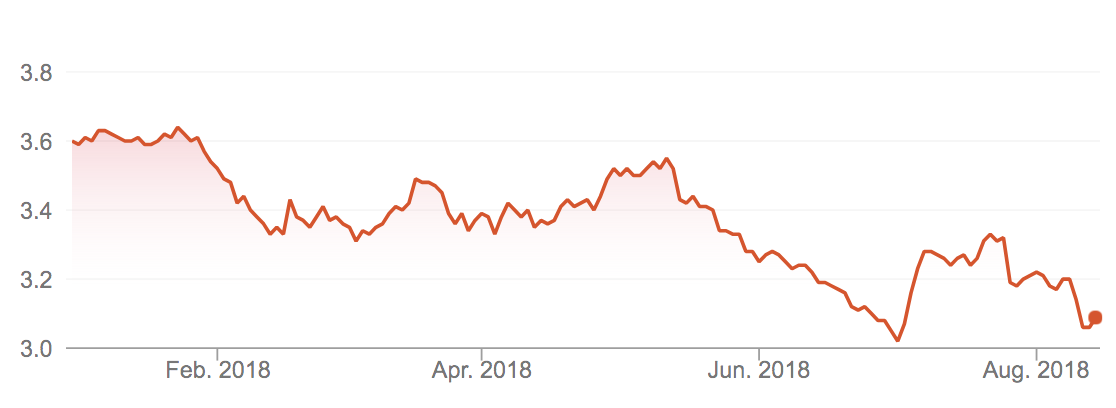The Telstra Corporation Ltd (ASX: TLS) share price has been on the slide since 2015. While the share price held around the $3.70 – $3.78 level in December last year, the downtrend is still persistent, with prices recently touching $2.60.
Like its other telco rivals, Telstra operates in an ultra-competitive market with thinning margins and high-capital infrastructure spend. With competitors – including Optus, TPG Telecom Ltd (ASX: TPM) and Vodafone – spending big on new technology and aggressively pursuing new users and as clients become more choosy when it comes to their telco providers, Telstra faces a lot of challenges on several fronts.
Some of the major factors weighing on Telstra shares include:
- Impact of the NBN
- The high cost of telco infrastructure roll-out
- Tech-savvy clients demanding better service at a competitive cost
- The threat from competitors and non-traditional telco providers
- Changing media and telco landscape
I think the telco giant may be forced to take some drastic measures if it is to protect and maintain its dominant position in the domestic telecom industry.
Mobile and broadband demand
One thing going for telco providers is the ongoing demand for communication services – mobile connection and broadband services – that will continue as consumers and businesses rely on technology for the majority of their day-to-day tasks.
For investors wanting to maintain their holdings in the telecom industry, looking at other telco players outside Australia may be an option.
An alternative to Telstra
One of the leading players in the telco space is Singapore Telecommunications Limited (Singtel), the largest mobile network operator in Singapore. Though it has a presence in Australia through Optus, the company is headquartered in Singapore. The company controls approximately 82 per cent of the fixed-line, 47 per cent of the mobile and 43 per cent of the broadband market in the Lion city.
Majority-owned by Temasek Holdings – the investment arm of the Singapore government, Singtel is the largest company by capitalisation listed on the Singapore Stock Exchange.
Singtel’s global presence
Despite the relatively small number of clients at its home base (4.1 million subscribers in Singapore), Singtel has reported a combined subscriber base of 640 million customers at the end of the financial year 2017. The massive client base was gained through its subsidiaries in Asia, India and Australia – a result of its aggressive expansion outside of its home country.
While the share price of Singtel has also been in retreat over the past year, it has not been anywhere near as steep or deep as the fall in Telstra.
SingTel Share Price in 2018

Despite facing the same competitive challenges as Telstra, Singtel has a much larger client base to tap into given its location in Asia. Singtel also has existing partnerships with major telco providers in different countries such as China, India, Japan, Philippines, Hong Kong, Malaysia, South Korea and Thailand. It also has a presence in Europe, UK, US and the Middle East.
Singtel or Telstra?
From an investor’s perspective, Singtel may be a competitive alternative to Telstra given the former’s expansion and growth prospects. Unless Telstra is able to sign partnerships with other global players, I think its share of the Australian telco market will continue to diminish as more rivals enter the fray.
This article was contributed by Alex Douglas, Managing Director of Monex Securities Australia (AFSL: 363 972), part of the Monex Group Inc.
Get more insights from Alex and Monex
The content of this article is given for general information only. As general information, no consideration or evaluation is given to the investment objectives or financial situation of any particular person. Trading and investing involve substantial financial risk. All readers of this article should make their own evaluation of the merits and suitability of any financial products and/or advice or seek specific personal advice as to the appropriateness of engaging in any activity referred to in this article in light of their own particular financial circumstances and objectives.






